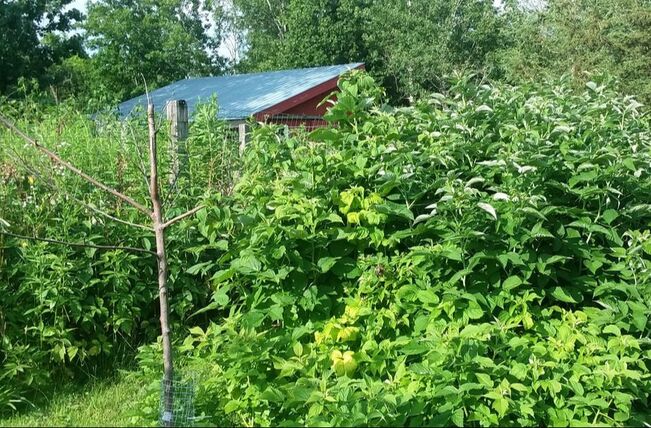
|
Before - lots of lawn to mow!
After: black raspberries, oregano, perennials, and more!
We propagated over 60 black raspberry plants last summer - such a simple process and basically free!
Elderberries, currents and walking onions
|
Approximately 200ft long/8-12ft wide hugelkultur bed with various herbs, perennials, honey berries, currents, gooseberries, grapes, hops, walking onions, cranberries, elderberries, black raspberries, strawberries, thyme and other ground covers with overstory trees of english walnut, apple, pears, basswood, linden berry, elm and others.
Cranberries living happily among medicinal herbs under an english walnut tree.
We planted oregano between all black raspberry plants to attract pollinators! We will also have lots of oregano to dry and jar for winter soups and recipes!
And a new greenhouse this past fall!
|
|
Original backyard (left side photos)
|
House Gardens. These are two Zone 1 gardens that are closest to our house that we use most often. One is fenced in an area of about 40'x30', and the other is comprised of six long beds outside the main house garden area. In these areas, we grow various herbs such as rosemary, thyme, different basil varieties, dill, chamomile, oregano and stinging nettle, but also blackberries, raspberries, honey berries, cherry plums, apples, shipova pears, goumi berries, gooseberries, peppermint, spearmint, anise hyssop, beans, peas, tomatoes, onions, carrots, melons, sunflowers and much more!
|
|
When our shed arrived in 2012. Dropped in the middle of the lawn and nothing else.
Our peach tree needed a little more fencing around it since we have some bigger boys in there this year, so it struggled some this year! Spearmint works as a wonderful ground cover underneath the tree, and the boys don't seem to both it too much - I think they had their fill early on! lol.
|
Boy, how the currents love living near the stinky boys!!
Lesson learned on where to plant elderberries! They get HUGE, especially where there is lots of manure around!
The boys, doing their part to grow food!
Storm stealing a nibble off the peach tree (or at least trying to!)
|
